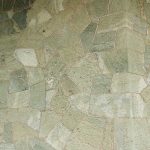Details in Delaware: Serpentine stone
“Details in Delaware” is a history-informed collaboration between Kara A. Briggs, an architectural historian with the Delaware Division of Historical and Cultural Affairs State Historic Preservation Office, and Desiree May, the Division’s social media lead, to bring some interesting Delaware history facts and preservation information to the forefront.
The idea is to showcase the diversity of what the Division does, while also highlighting unique architectural features and landmarks to educate the public. Check out more interesting details like these by visiting the Division on Facebook, Instagram and Twitter!

Serpentine stone was frequently used as a building material in the 18th and 19th centuries, and was valued for its distinctive greenish color. The gemstone was utilized for entire facades or simply as a trim material. Its popularity was short-lived as it is a soft stone prone to absorbing water, which, in the long-term, allows for accelerated deterioration of the stone between periods of freeze and thaw cycles. Detailed here is the Mifflin House, constructed between 1879-1885 with a combination of serpentine stone and brick.
And don’t forget the Division also has a podcast with many episodes exploring fascinating details about Delaware history. Check it out at history.delaware.gov/podcast.


